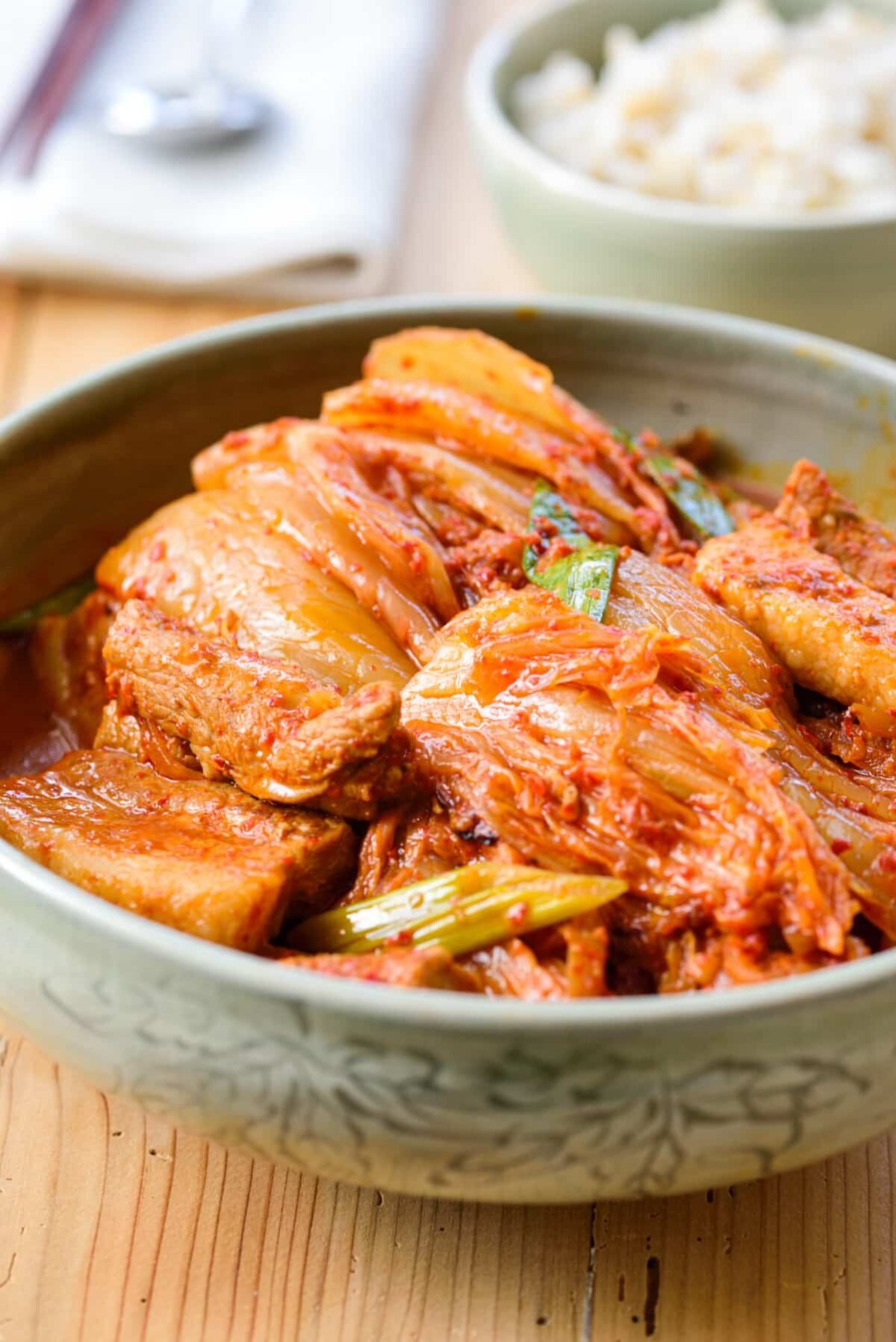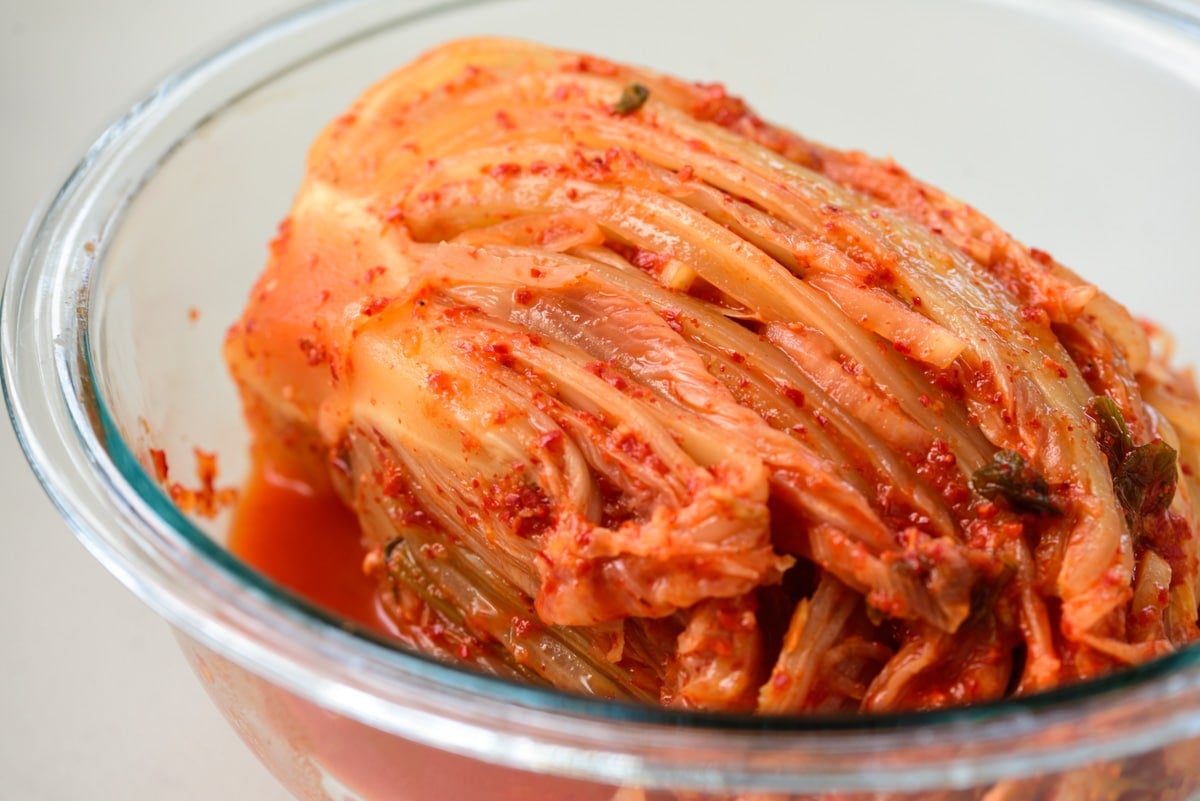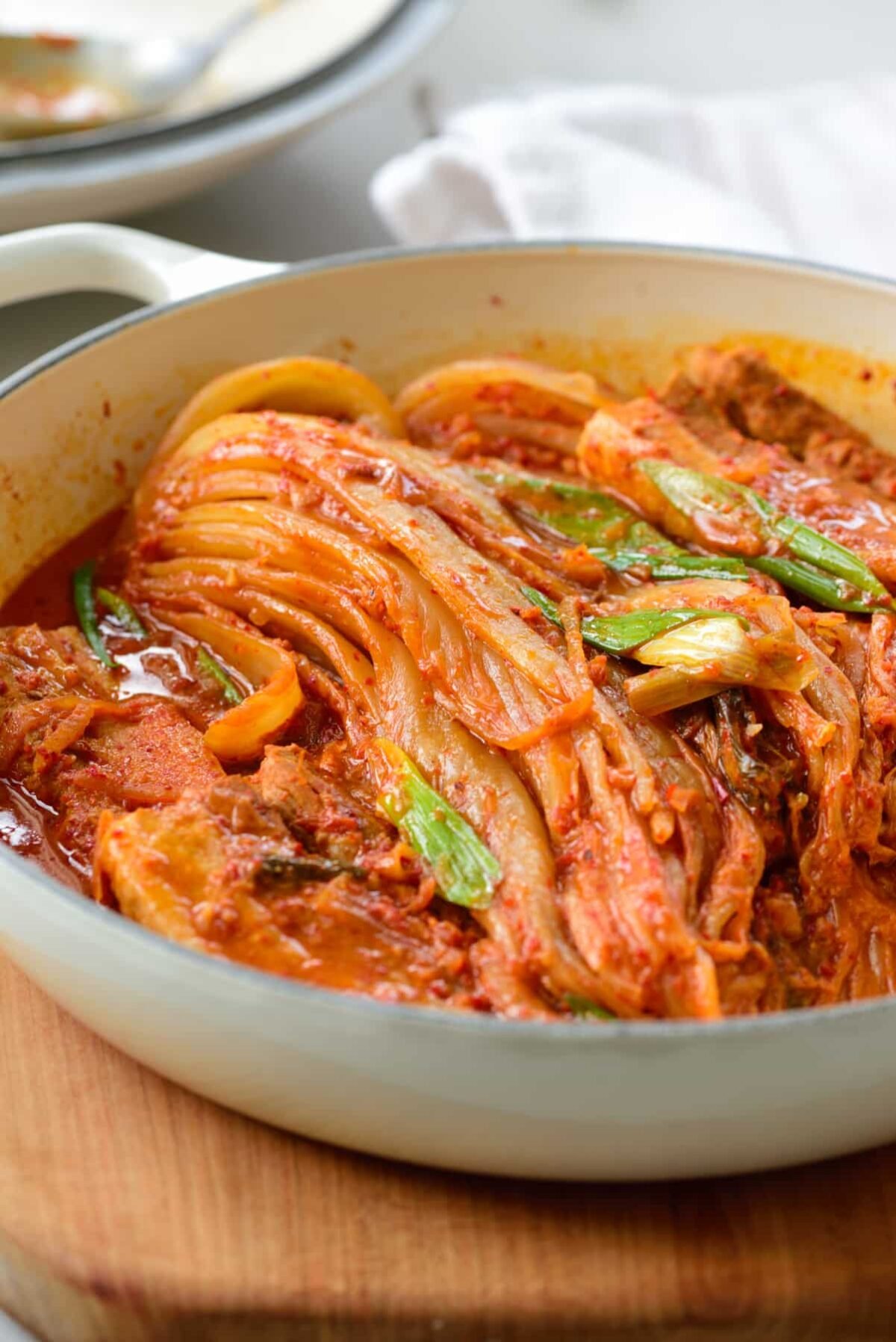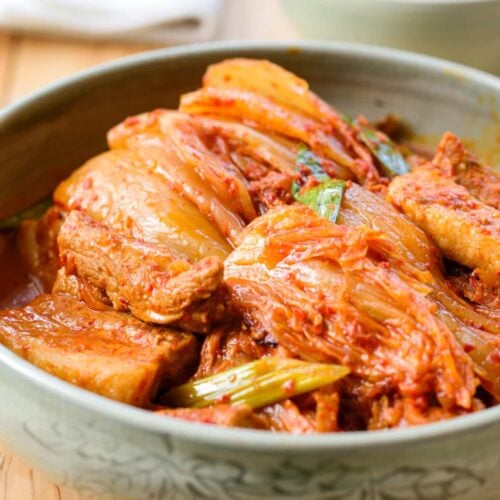If you like kimchi jjigae (stew), try this kimchi jjim (braised kimchi). Slow-cooked with a small amount of liquid and fatty pork, braised kimchi is tender and full of flavor.

Aged kimchi
Every year in late fall, I make enough kimchi to last through winter and spring. By this point, the kimchi has matured and is very sour with an intense flavor, making it perfect for stews or soups! Another popular dish made with aged kimchi is kimchi jjim (김치찜), braised kimchi.
In Korea, this dish often uses mukeunji (묵은지), a traditional poggi kimchi that has been aged for at least six months. The taste of this aged kimchi is quite intense. Your favorite Korean restaurants might have a dish or two with mukeunji, like mukeunji jjim (usually braised with pork) and mukeunji godeungeo jorim (braised kimchi with mackerel).
Do not worry! Your kimchi doesn’t have to be 6 months old to make this dish. However, it is best to use well-fermented kimchi that has gone sour. The older the better! If you don’t have homemade kimchi, your Korean market may stock commercially made poggi kimchi.

The meat
As I always say, kimchi and fatty pork are a match made in heaven. Fatty pork is most popular for kimchi jjigae in Korea. Unsurprisingly, pork ribs in kimchi stew are common and delicious. Pre-cook the ribs for 20-30 minutes until fairly tender, then cook with kimchi. If you don’t like pork, use beef.
Tips for making good kimchi jjim
- Old, sour kimchi works best in this dish.
- Use the water for rinsing rice (ssalddeumul, 쌀뜨물) for the braising liquid. It is commonly used in Korean stews. Use the water from the second or third rinse. The rice water slightly thickens the broth and enhances the flavor of the braised kimchi. Otherwise, anchovy broth, chicken broth, milk bone broth or vegetable broth are also suitable for this dish.
- If kimchi juice is available, it adds a lot of flavor to the broth.
- You can cut kimchi into small pieces before cooking, but in Korea it is commonly prepared with the quarter of the cabbage intact, as shown in the photo below, and cut at the table.
- If the kimchi is too sour for your taste, add some sugar to the stew to balance out the sour taste. It rounds off the flavor nicely, but it’s not absolutely necessary if you don’t want to use sugar.

More recipes with aged kimchi
For more Korean cuisine inspiration, see below youtube, Pinterest, Twitter, FacebookAnd Instagram.

Kimchi Jjim (Braised Kimchi)
Primarily
Servings: 4
Print recipe
Remarks
Adding some sugar to the stew will balance out the tart taste of kimchi. It rounds off the flavor nicely, but it’s not absolutely necessary if you don’t want to use sugar.
This kimchi jjim recipe was originally posted in March 2013. I’ve updated it here with new photos, more information, and minor tweaks to the recipe.

